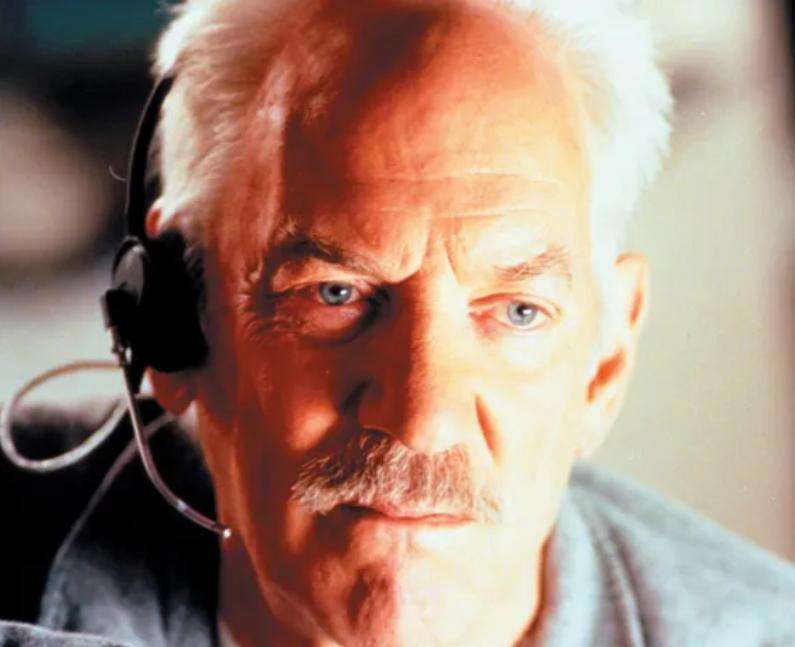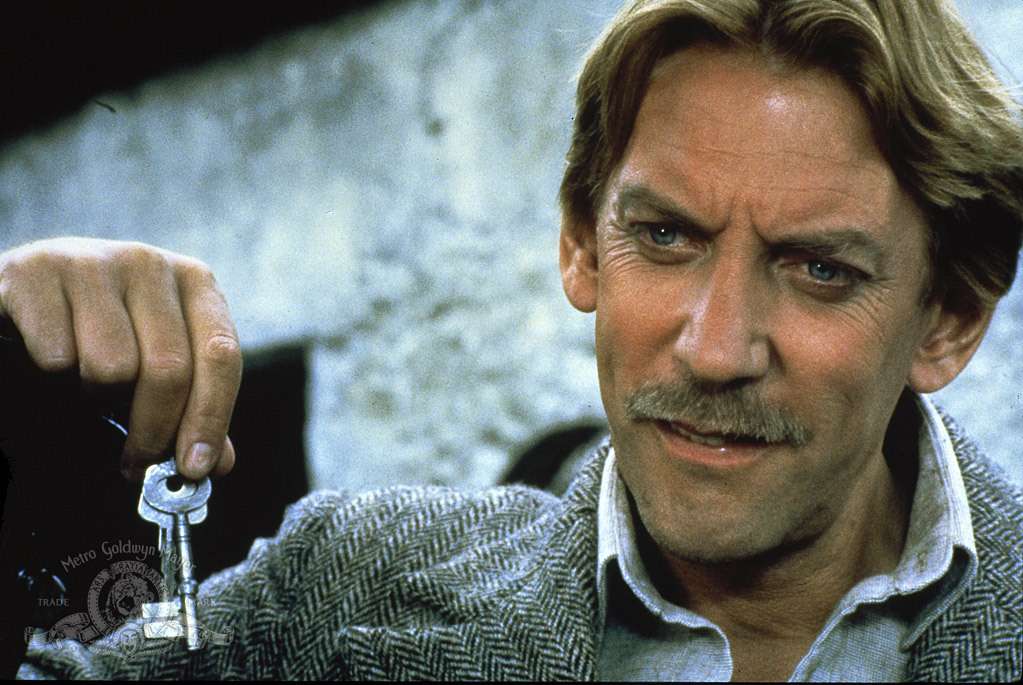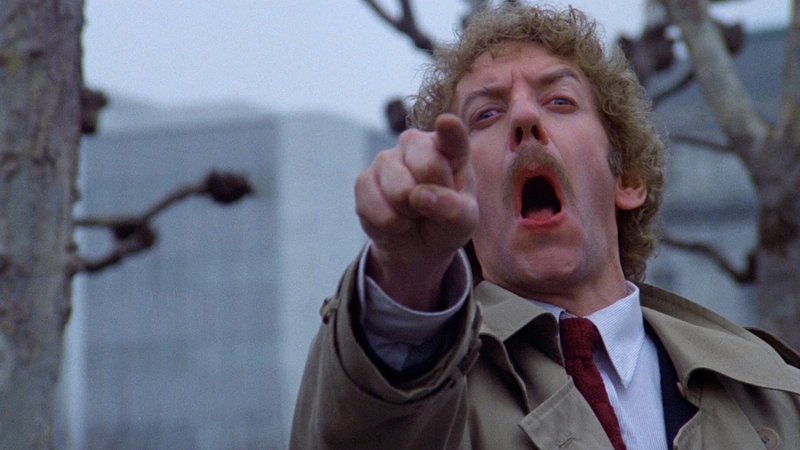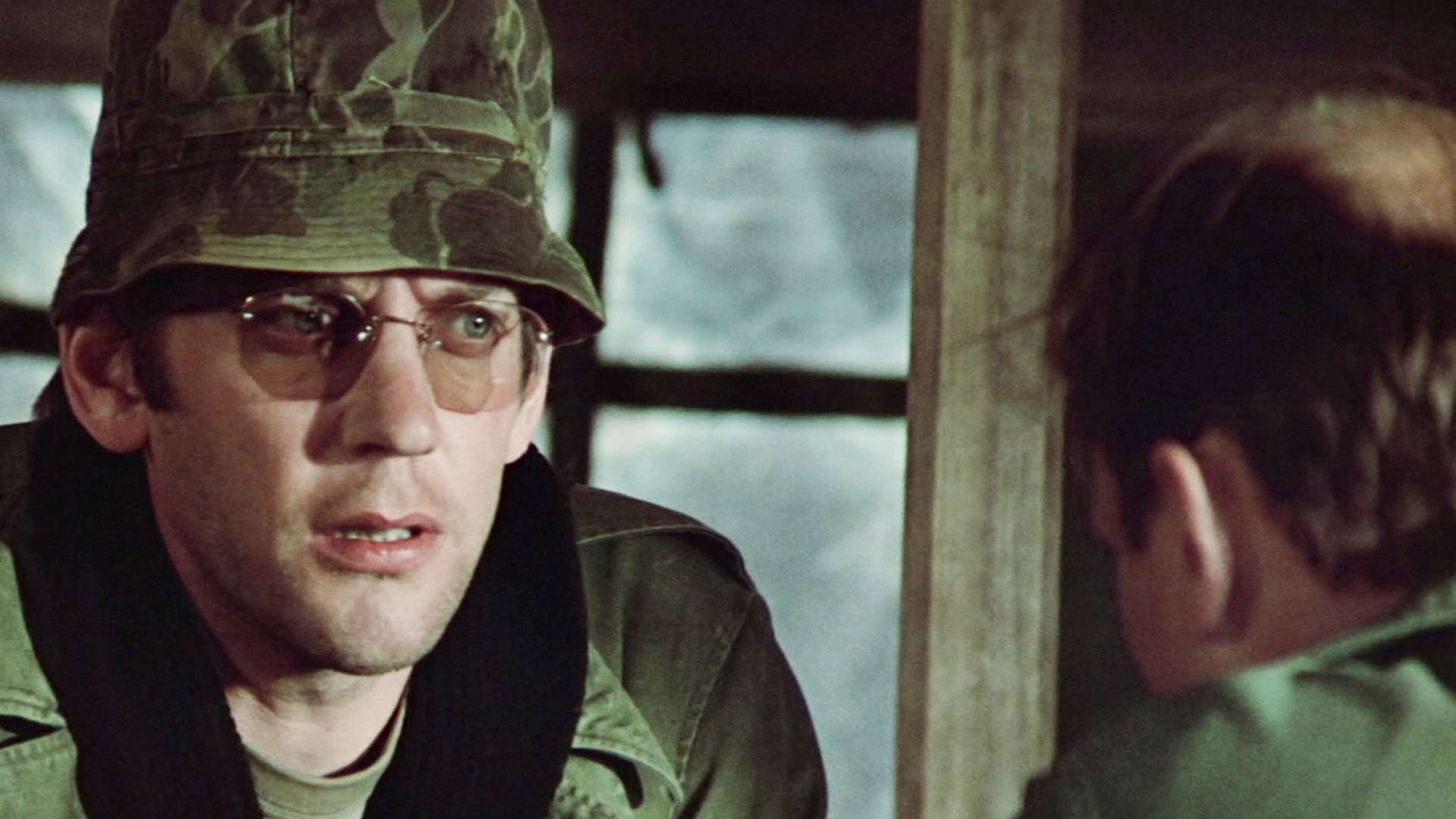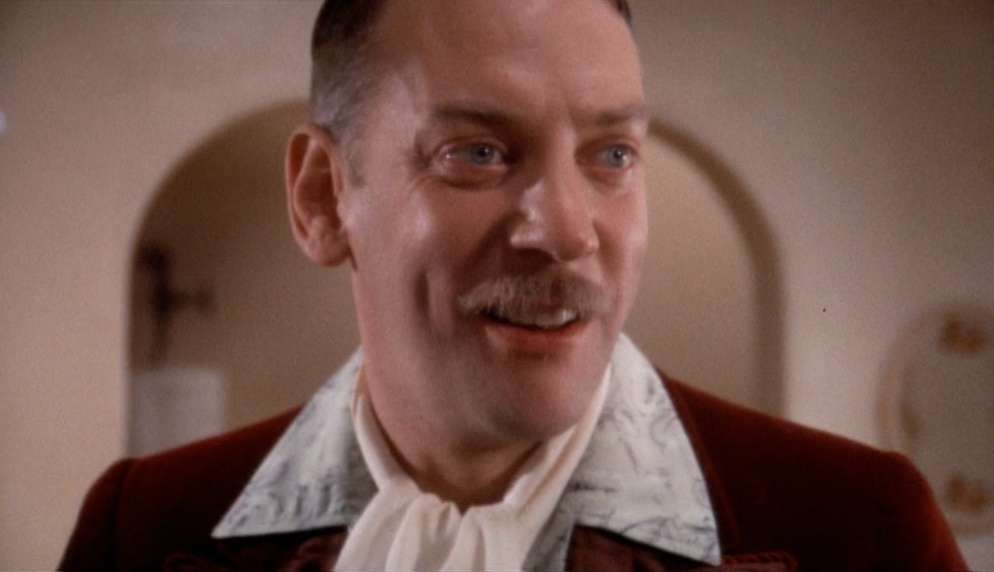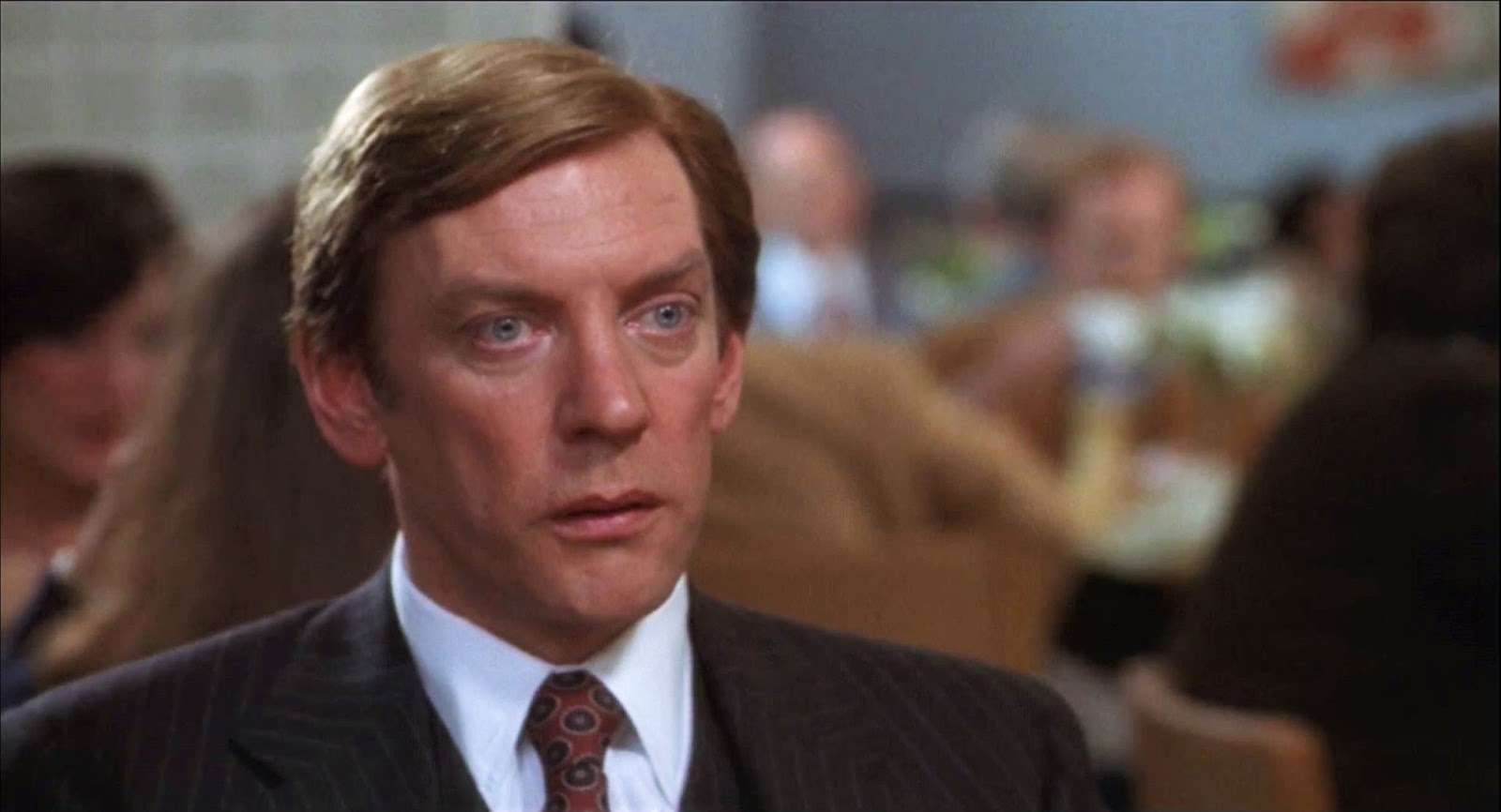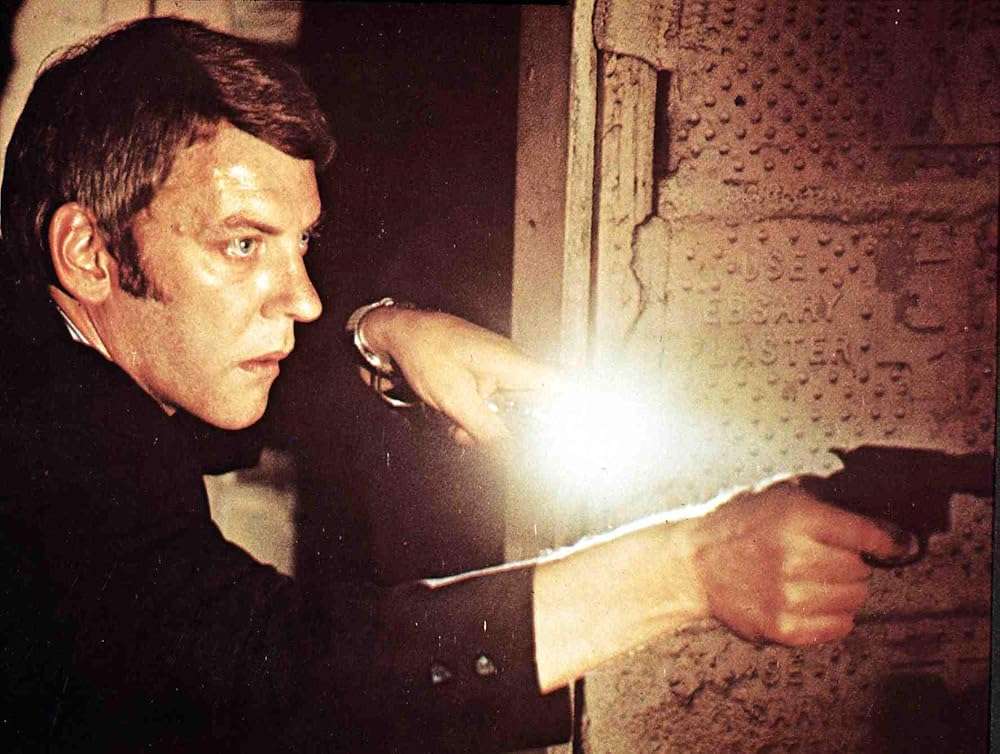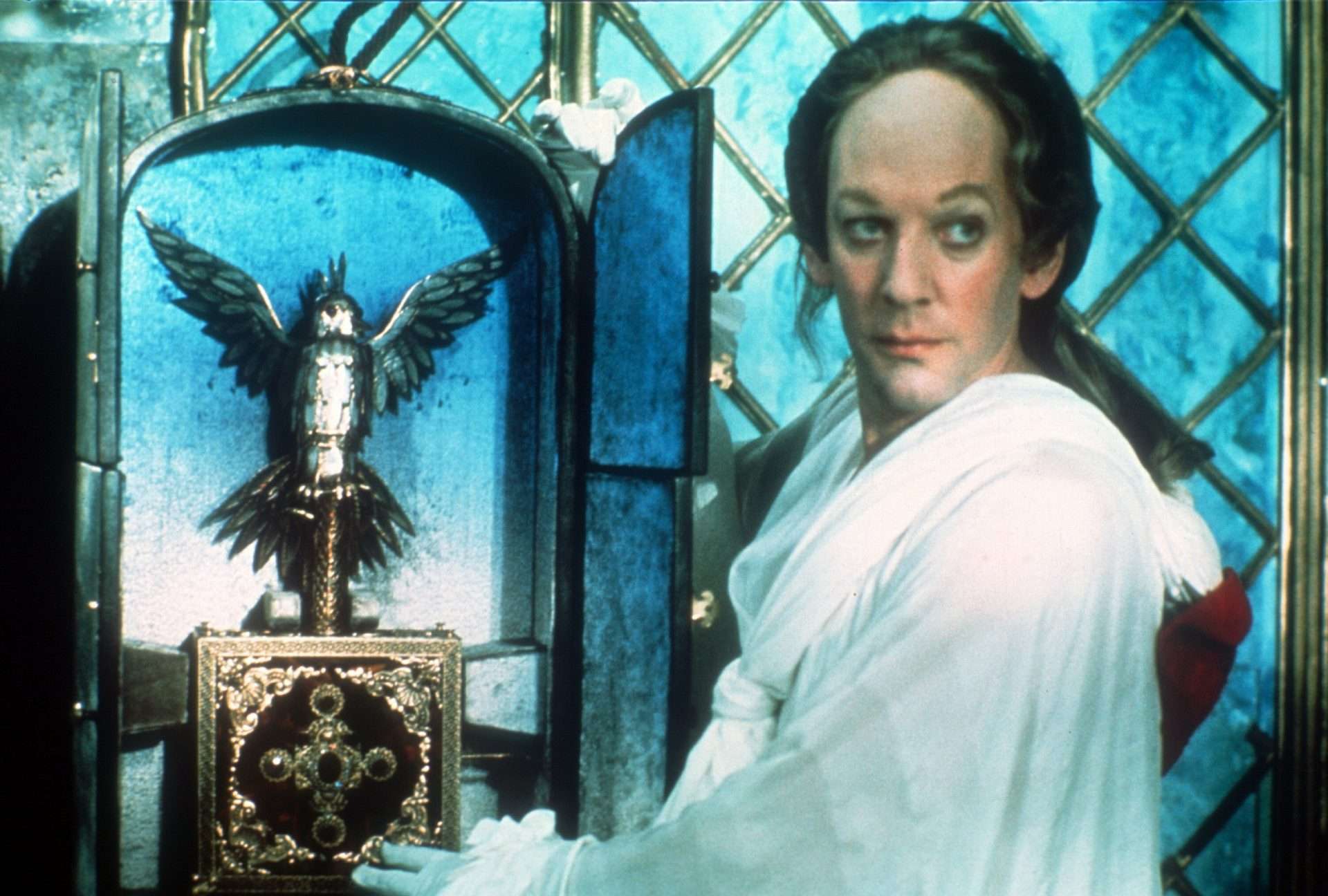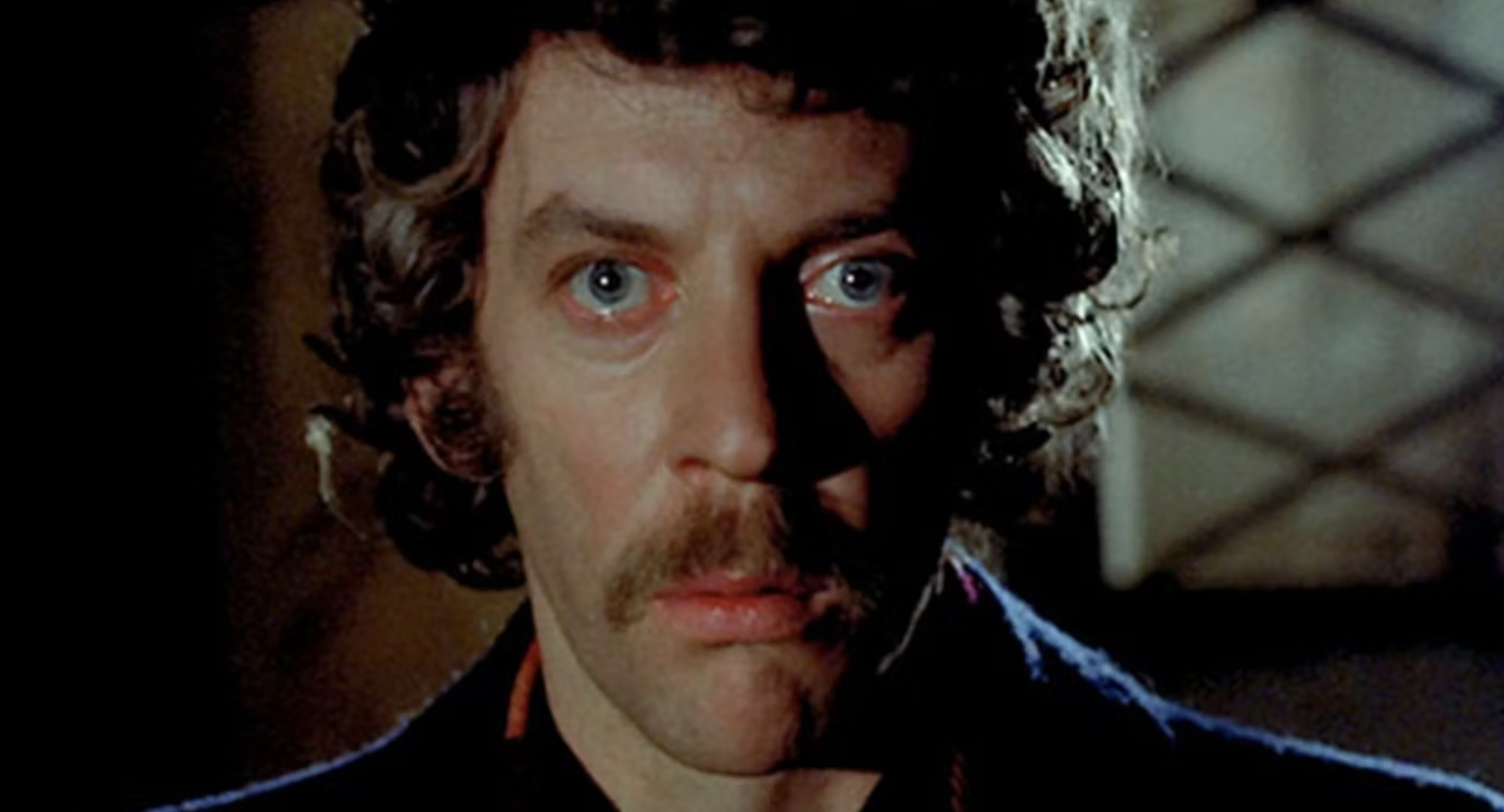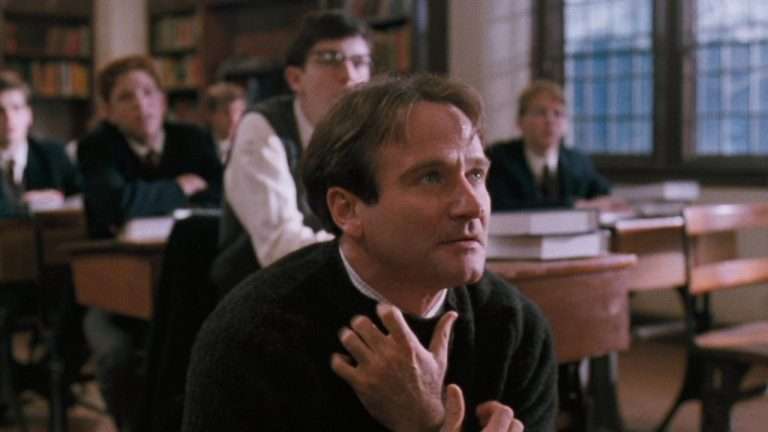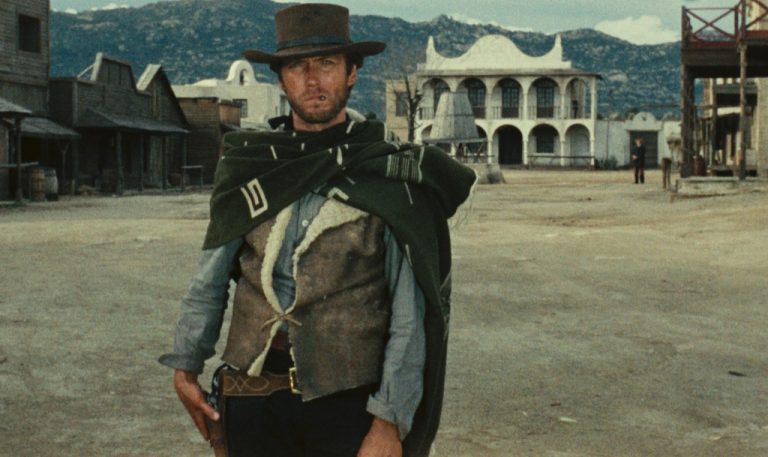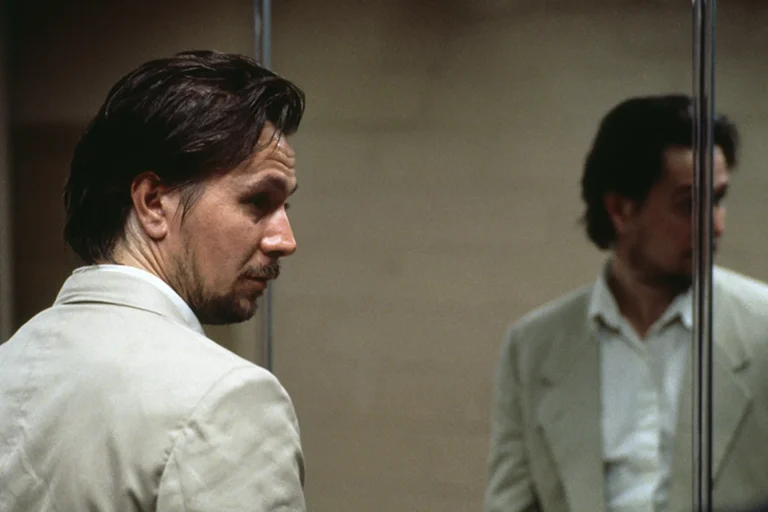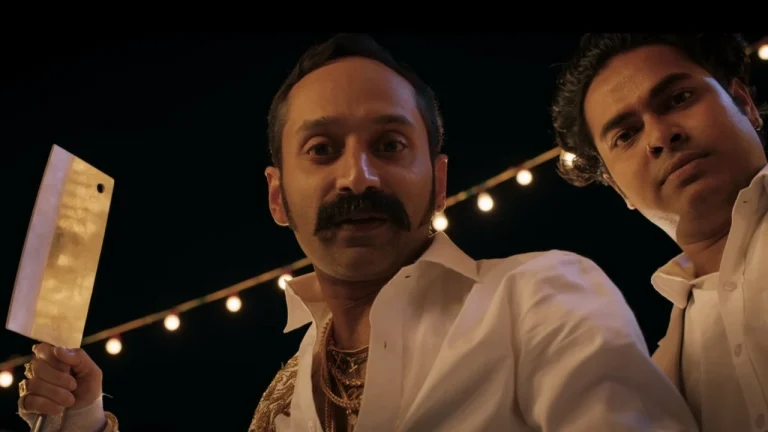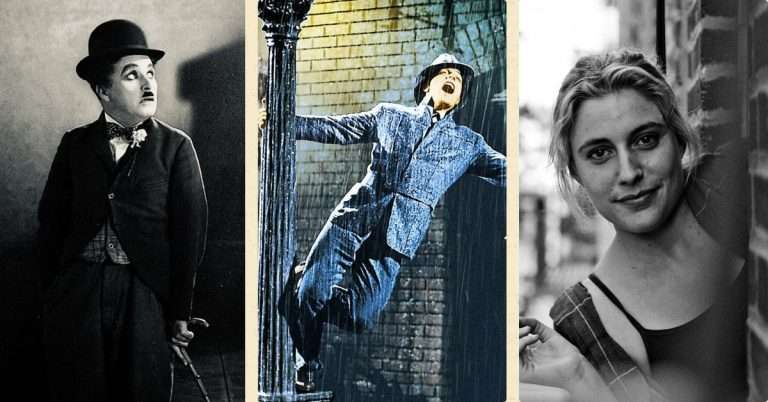In June 2024, movie lovers everywhere were saddened by the news of Donald Sutherland’s passing at age 88. The prolific and versatile Canadian had acted in many of the finest films of the 1970s and continued to work regularly thereafter, showing irreplicable dedication to his craft in the tiniest of parts and in the smallest of productions. Alongside Dustin Hoffman, he is perhaps the ideal embodiment of the new breed of movie stars that the New Hollywood movement produced, with actors prized for their unique humanism and abilities in front of the camera rather than their good looks and star persona. But while Hoffman and other colleagues pursued method acting as a means to produce fine character work, Sutherland was an immensely confident performer who could easily submerge himself into a role with his distinctive facial features and booming vocal timbre.
Despite his passing, the Sutherland legacy will live on, not just through his son Kiefer, who has proven to be quite the talent in his own right. It will live on through his influential approach to the form and the impressive body of work that he was involved in. Much of this list focuses on his heyday in the 1970s when all the world’s best directors seemed to be lining up to work with him, but the supporting roles later in his career should not be overlooked either. Even the most mediocre of films are worthwhile for his screen presence, especially now that his long and storied career has reached its climax.
10. Space Cowboys (2000)
Here’s the premise: to prevent a Soviet satellite from falling from the sky, NASA recruits four retirees who know how to operate and dismantle the archaic technology. In other words, through various complications, we get to see a motley crew of Clint Eastwood (70), Tommy Lee Jones (54), Donald Sutherland (65), and James Garner (72) don spacesuits and blast off into orbit. It’s pure Hollywood fantasy, but boy, if the on-screen talent doesn’t give it their all in trying to sell it. Eastwood stars and directs with his typical brand of observant stoicism, and Garner gives a fun performance that evokes his history in the Western genre. Still, it’s Sutherland who goes the furthest in developing his character and bonding with the audience.
The genuine sense of camaraderie between these four seasoned performers is the film’s greatest strength, and Eastwood recognizes this, allowing for several scenes where the men can play off each other like old pros. The formula clearly worked as this unorthodox, out-of-time adventure movie made a small fortune at the box office, capturing in its heart-warming premise and teary-eyed finale the wide-eyed American optimism of the Space Age while also meditating on how the old times can never truly return in the same way. It’s a far more interesting film than it may appear to be and a touching late-career highlight in Sutherland’s catalog.
9. Eye of the Needle (1981)
British director Richard Marquand is now solely remembered as the director of “Return of the Jedi,” but it’s worth reminding the uninitiated of how he got the job. George Lucas contacted Marquand because he was so impressed by this wartime mood piece, which starred Donald Sutherland as a German spy camped out in the hinterlands of Scotland. It’s one of the great man’s most foreboding and intimidating performances, a ruthless killer whose cold-blooded nature is the human embodiment of the fascist state.
Sutherland feels right at home in a British production filled with domestic character actors. All of a sudden, he isn’t a unique subversion of a movie star but a masterful player within a terrific ensemble where he can flex his muscles as an actor of frightening intensity. There is an unlikely seductive quality to the performance, and the sadness behind his eyes makes the character of Faber perversely sympathetic despite his plans to foil the D-Day landings. Contrasting the personal with the historical, the horrifically evil with the quaintly banal, this film deservedly put Marquand on the map and reiterated Sutherland’s unique ability to play leading men and villains, even at the same time.
8. Invasion of the Body Snatchers (1978)
The story that forms the basis of “Invasion of the Body Snatchers” has spawned films in the 1950s, ‘70s, ‘90s, and ‘00s, not to mention the countless other sci-fi pictures inspired by the creepy concept of ‘pod people’ who replicate and replace the individual. Philip Kaufman’s take on the subject stars Sutherland in the leading role as scientist Matthew Bennell and is overall a more polished product than the Cold War kitsch of the original. The atmosphere is suitably downbeat, and the characters seem to be earnestly grappling with this sci-fi situation, which is a grungy take on genre fiction that has proven influential to subsequent adaptations.
Sutherland brilliantly conveys the escalating paranoia of the plot. Initially a skeptical scientist whose mind is trained to focus on logic and problem-solving, his demeanor is chipped away to the point of desperation. His naturalistic acting style grounds the premise and ensures it has genuine stakes for the viewer, a constant dread emanating from the screen until the famous climactic scene where Bennell is finally pushed over the edge. In a film about the importance of maintaining identity, Sutherland’s unique on-screen presence is vital in driving home the themes and keeping the viewer engaged through some pretty sobering material in this deserving ‘70s classic.
7. M*A*S*H (1970)
Considering its TV show spin-off was a gargantuan success in middle America, it can be easy to forget what a revelation Robert Altman’s film “M*A*S*H” seemed in 1970 when it won the Palme d’Or and opened a new chapter in the history of film comedy. This freewheeling satire, following the lives of army doctors in the Korean War, featured such innovations as cursing and overlapping dialogue, with the comedy stars of old replaced by an ingeniously assembled ensemble cast who could embody their characters with pain and pathos between the jokes.
Sporting a bucket hat and tinted sunglasses, Sutherland stars as “Hawkeye,” one of two surgeons we are introduced to at the movie’s start. Alongside his buddy “Trapper” (the effortlessly cool Elliott Gould), they hang out, make friends, and try to make the best of life on the battlefield of a useless imperial conquest. The characters’ attitudes towards women have come under more scrutiny in the years since M*A*S*H’s release, but Sutherland and Gould’s easy charm as a double act makes them impossible to entirely dislike. Their ability to keep joking and talking during atrocities is admirable and relatable in the modern world, where we pursue our own paths of isolated humor despite, or perhaps because of, the carnage that surrounds us. Indeed, this was the movie that made stars out of Sutherland and Altman and, in the process, helped to transform the landscape of contemporary film.
6. A Dry White Season (1989)
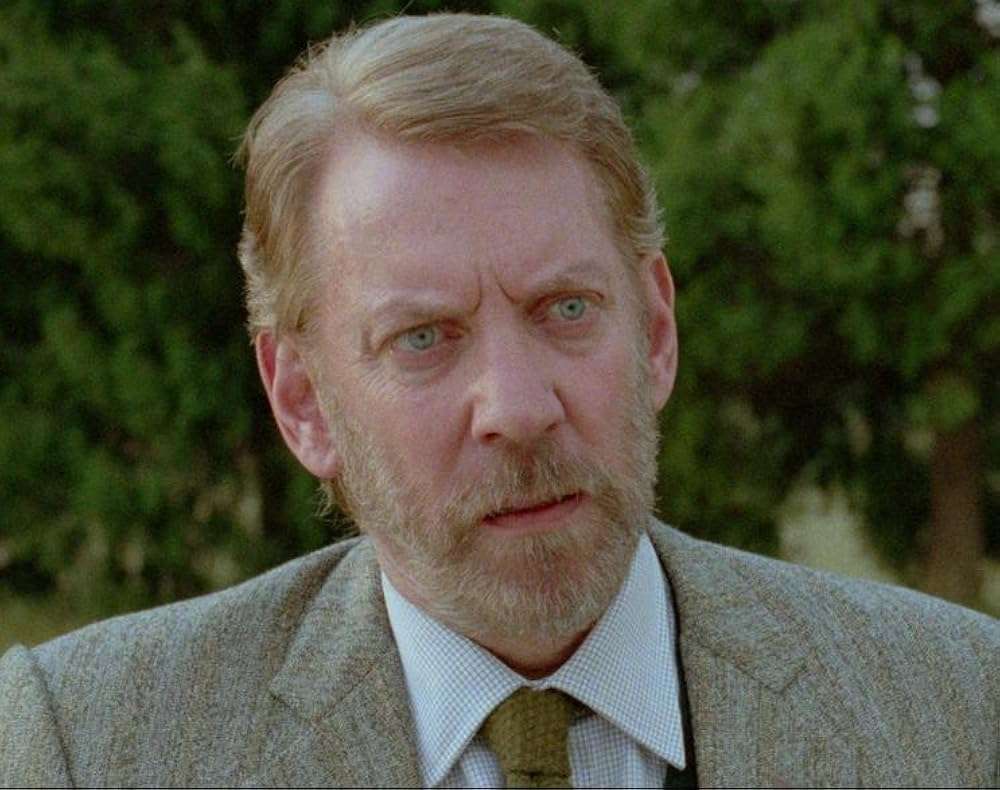
You may not be familiar with this drama about apartheid-era South Africa, but after a quick glance at the cast and crew, you should be intrigued. Sutherland stars as a school teacher in an all-white school who undergoes a moral epiphany and is backed by a supporting cast including Susan Sarandon and Marlon Brando in what could be the latter’s final great performance. Behind the camera, we have Euzhan Palcy, the celebrated French-Martinican auteur who, with this film, became the first black woman to direct a studio feature in the US, and the film’s righteous anger is worthy of that accomplishment.
What, on other filmmakers’ hands, could turn into rote Oscar bait becomes an exhilarating drama with a strong visual style and outspoken moral righteousness thanks to the guiding hand of Palcy and Sutherland’s conflicted central performance. While Sutherland is never one to shy away from a showier performance, he takes on a selfless role here. Despite the plot synopsis, “A Dry White Season” is not essentially Sutherland’s film; the story of a white school teacher is instead intended to convey much of how the apartheid state divided and sowed hatred into South African culture and the adverse, dehumanizing effects it had on the black population. It’s a thoughtful and forthright political drama from an underrated female filmmaker that’s worthy of a revisit.
Related to Donald Sutherland Movies: 25 Great Trial Films of All Time, Ranked
5. The Day of the Locust (1975)
Movies about movies are as old as the industry itself. No medium loves to riff on its own origin stories as much as cinema. John Schlesinger’s “The Day of the Locust” is one such Tinseltown fable, set in the 1930s and following an aspiring actress’s love life caught between two men – her next-door neighbor, an earnest upstart art director, played by William Atherton, or Homer (Sutherland), the more mature and settled option with whom she has a chance encounter. The two actors succeed in providing contrasting models of masculinity and Karen Black, as the woman caught between them is endlessly charming.
Despite these romantic overtones, the film is among the most sobering and cynical portrayals of Hollywood released by a major studio, which may explain why it failed to find an audience upon initial release. Watched today, we can see that “The Day of the Locust” succeeds where copycats like “Babylon” failed because of this bleak but compelling worldview, which allows Schlesinger to contrast Conrad Hall’s gorgeous cinematography and luscious sets with the milieu of desperate industry bottom-feeders waiting for a big break that may never arrive. The role of Homer reflects Sutherland’s persona in a way that is at a cool remove from the Hollywood racket but never too far from its magnetic pull.
4. Ordinary People (1980)
There’s a strong argument to be made that Donald Sutherland is the single greatest actor to never receive an Academy Award nomination. That’s right, not even one. This is despite starring in “Ordinary People,” which swept the 53rd ceremony, captivating voters with its heartbreaking and deeply human approach to grief and mental health. It also signaled the arrival of Robert Redford as a director, the work of a famous actor behind the camera doing his best to work with his colleagues in front of it, creating a marvelous ensemble including Sutherland, TV’s Mary Tyler Moore, Judd Hirsch, and a young Timothy Hutton in a breakout role.
Sutherland’s role as Calvin, the father of the Jarrett family whose lives are destroyed by the suicide of their son, is one of the most subdued and challenging in the ensemble. He is perpetually caught in the crossfire of his wife and son, desperately clinging to the remaining threads of their nuclear family unit. Carrying the role of the reasonable everyman in a melodrama is no easy task, and Sutherland excels in building up an inner turmoil and tension that he can’t bear to let spill out onto the surface. It’s a brilliant performance in a very moving film whose Oscar-winning status belies the subtlety and quietness of its power.
3. Klute (1971)
One of the best things about the New Hollywood movement, which absorbed American cinema in the late 1960s and early ‘70s, is that this new generation of filmmakers, disillusioned with the political turmoil and corruption of the day, could make refreshingly bleak portrayals of American culture and society at odds with their cinematic forefathers. There is no moral evangelizing in sight in “Klute,” for example, Alan J. Pakula’s paranoia-tinged thriller starring Donald Sutherland and Jane Fonda in two similarly dirty lines of business – she’s a sex worker, and he’s a cop.
Anybody familiar with Pakula’s work on “The Parallax View” or “All the President’s Men” will expect this to be a beautiful-looking movie. This was a director who worked with top-tier cinematographers to create striking urban and suburban landscapes. What you might not expect is how enraptured the viewer can become in this mystery and the layered characterizations of both Fonda and Sutherland. Fonda’s call girl Bree finds herself in an uncertain spot in the sexual revolution, unsure as to whether sex work is her form of liberation or a source of continued oppression, whereas Sutherland’s detective Klute has to balance his moral compass with the dirty work that comes with a position of patriarchal and social authority in ‘70s America. The two also have palpable chemistry on screen, which makes sense considering they shared a brief real-life romantic association soon after.
2. Fellini’s Casanova (1976)
Iconic director Federico Fellini’s obsession with the battle of the sexes reached its logical conclusion with this sprawling, immensely rewarding biopic of the legendary ladies’ man and hedonist Casanova. With all due respect, Sutherland wouldn’t appear the most obvious choice for the role, but he carries himself with a striking physical presence and enigmatic charisma that is truly enrapturing. Even among Fellini’s typical smorgasbord of baroque production design and costumes, Sutherland stands out, commanding the screen with his baritone voice. This elusive charm is vital to understanding Casanova, a man who flew into high society despite his contempt for it and who had more lovers than he knew what to do with.
The film is best explained as pure, distilled Fellini. Much of his 1970s work retreats into the annals of Italian cultural history, planting his own legendary status into the stories of Satyricon, the history of Rome, or, in this case, the diaries of Casanova. This is perhaps the most successful of his later films because the hedonism associated with the period setting is perfectly matched for Fellini’s rococo stylizations, and in Sutherland, he has his best leading man since Marcello Mastroianni. The mise-en-scène is marvelous, the energy propulsive, and the atmosphere suitably debauched, at once a definitive take on the notorious libertine and an unadulterated depiction of Fellini’s ego.
1. Don’t Look Now (1973)
Even if you haven’t seen Nicolas Roeg’s masterpiece “Don’t Look Now,” you’ll have seen its fingerprints all over contemporary cinema. This horror film prizes atmosphere and mood over jump scares and gore, making the gorgeous city of Venice appear the most intimate place on earth and making the sight of a red coat a spine-tingling motif. At the center of the spookiness are Donald Sutherland and Julie Christie as a man and wife mourning the death of their child. Similarly to his role in “Ordinary People,” Sutherland initially shows his grief through restraint and realism, sternly dismissing Christie’s idea that they can communicate with their daughter from beyond the grave.
As the film progresses, it becomes Sutherland’s movie. With Christie’s character back in England, we follow Sutherland on a nightmarish stroll around Venice’s buildings and back alleys, searching for answers as to the identities of two enigmatic women and a young girl in a red coat who resembles his daughter. Roeg’s editing style is abstracted and unorthodox, further placing the action in the liminal space of an uncomfortable nightmare. The movie’s brilliant coda is the best kind of ending in that it puts the preceding two hours and many of the artistic choices made by Roeg into perspective. Some questions will always remain in a film so puzzling and multi-faceted, but it is rewarding enough to endure with viewers fifty years after its release. If Sutherland is to be remembered for just one movie, I’d like it to be for this landmark of the horror genre.

